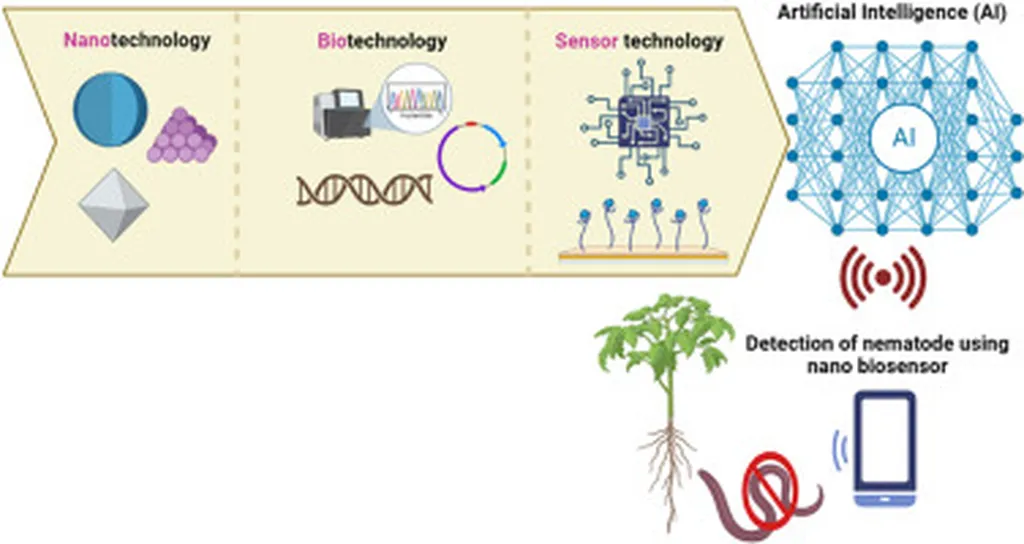In the heart of Chennai, India, at the Vellore Institute of Technology, a groundbreaking study is unfolding that could revolutionize the biosensor industry and have significant implications for the energy sector. Anusuya Periyasami, a researcher at the School of Advanced Sciences, has been delving into the world of nanotechnology, specifically focusing on a novel biosensor design that promises unprecedented sensitivity.
The study, published in the journal Nano Select (which translates to “Nano Choice”), introduces a MoS₂-based dual-drain, dual-gate Schottky tunnel field effect transistor (DD-DG-STFET) biosensor. This sophisticated device is designed to detect biomolecules with remarkable precision, thanks to a nanogap under the gate electrode on the source region where biomolecules are immobilized.
Periyasami explains, “The key to this innovation lies in the unique properties of molybdenum disulfide (MoS₂). Its tunable bandgap, high surface-to-volume ratio, and smooth surface without dangling bonds make it an ideal material for Schottky FET biosensors.”
The research team utilized the SILVACO ATLAS TCAD tool to simulate the proposed device, calibrating the results to evaluate the drain current, ION/IOFF ratio, and sensitivity. The findings are impressive, with the biosensor demonstrating a maximum sensitivity of 57 mV for positively charged biomolecules.
But what does this mean for the energy sector? Biosensors play a crucial role in monitoring and controlling biological processes, which can be harnessed for energy production and storage. The high sensitivity and low-cost nature of this new biosensor could lead to more efficient and cost-effective energy solutions.
Periyasami’s work also explores the impact of steric hindrance on sensitivity, examining various patterns and changes in charged biomolecules. This thorough analysis underscores the potential of the DD-DG-STFET biosensor to outperform existing technologies, paving the way for advancements in label-free biosensors.
As the world continues to seek sustainable and efficient energy solutions, innovations like Periyasami’s biosensor offer a glimpse into a future where technology and biology converge to create groundbreaking advancements. The study not only highlights the importance of materials science and nanotechnology but also underscores the potential for interdisciplinary research to drive progress in the energy sector.
In the words of Periyasami, “This research is just the beginning. The possibilities are vast, and the potential for impact is immense.” With such promising developments on the horizon, the future of biosensor technology looks brighter than ever.

